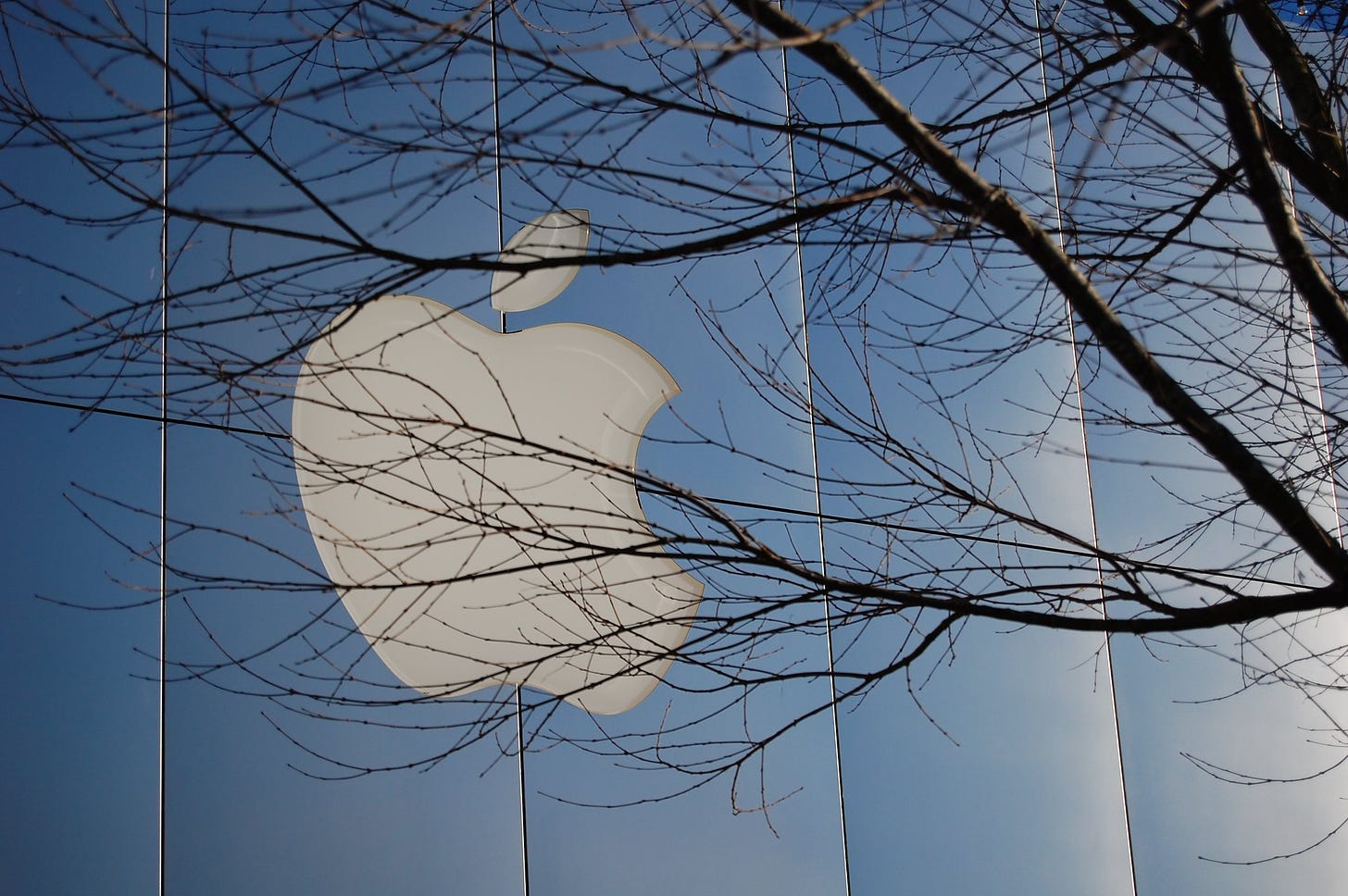https://boondoggle.substack.com/p/apple-schools-north-carolina
Apple Schools North Carolina
PLUS: The Amazon HQ2 displacement era begins.
| 8 |

This is Boondoggle, the newsletter about corporations ripping off our states and cities. If you’re not currently a subscriber, please click the green button below to sign up. Thanks!
Three years ago, Apple snubbed North Carolina when it chose a new campus location, instead landing, like so many tech corporations these days, on Austin, Texas. But playing hard to get turned out to be very lucrative for the iPhone and iPad designer: On Monday, North Carolina announced that Apple will open a new campus in the state, its first on the East Coast, in exchange for nearly $850 million in state taxpayer funds, as well as a big local property tax giveaway.
This is a massive deal, nearing Amazon HQ2 level in scope. And it’s a bad one for North Carolina. I’m going to key in on three of the worst aspects below, as they are regular features of problematic corporate incentive arrangements that North Carolina seriously amplified, particularly around education spending.
1) North Carolina is paying to “create” research jobs in a research hub. Apple’s new campus will be in an area that’s literally called the Research Triangle, because of its proximity to several top universities, two of them public, and tons of other large corporations doing R&D work. There’s every reason Apple would want to put a campus composed mainly of advanced research jobs — which is apparently the plan — in this location, tax breaks or no tax breaks.
Back in the 1950s and 1960s, North Carolina officials and local leaders put a lot of effort into setting up the Research Triangle. Though, like many states, North Carolina has cut higher education spending deeply in the last decade, it still has some of the highest per-student outlays and lowest public college tuition rates in the country.
It’s those educational investments and human capital, not tax incentives, that were likely the draw for Apple. In fact, Google recently announced a new campus in the Research Triangle too, and said it was not asking for tax incentives. It was presumably attracted to many of the same aspects of the area that Apple was.
Something like the Research Triangle should, more than 60 years after it was created, be self-sustaining, and attractive enough to employers that there don’t need to be added incentives piled on top of it. And Google’s move shows that it absolutely can be. Meanwhile, giving away the store to Apple today means less money for tomorrow’s smart investments.
Not for nothing, if I were CEO of one of the other Research Triangle-based corporations, I’d be asking North Carolina where my $850 million is.
2) The deal is long and expensive. OK, now for the details. In return for creating 3,000 jobs, Apple will receive $845.8 million in payouts over 39 years from the state, plus a 50 percent reduction in its property tax bill over 30 years from Wake County.
The county incentives are going to be worth about $20 million, per the state Commerce Department. The state spending, meanwhile, comes from a program called Jobs Development Investment Grants. It involves a controversial practice dubbed “paying taxes to the boss,” under which taxes paid by Apple employees will not actually go into the state’s coffers, but will be sent back to Apple. In a decade, Apple will be receiving about 90 percent of its employees’ taxes back as payments.
The cost of these jobs is about $280,000 apiece, putting this deal near the top of the pile of most expensive subsidy arrangements, which makes sense as the JDIG program was expanded to give increased incentives to large tech corporations as part of North Carolina’s unsuccessful effort to win that previous Apple campus, as well as Amazon’s HQ2.
In one sense, though, the state is protected, since the subsidies are connected to particular jobs. But if, as I said above, Apple was going to come to North Carolina no matter what, then this is all money out the door that could have been spent on providing services to more North Carolinians. And even if Apple passed, presumably some other large tech corporation would be drawn to the same area, as not just Google, but Epic Games and Cisco were. There’s nothing so special about Apple that requires massive state spending in order to have it around.
Previous to this week’s announcement, Apple had already taken more than $320 million in public funds from North Carolina, mostly for a data center in Catawba County.
3) Apple will pay a pittance toward North Carolina education. And now back to schools. One of the details North Carolina officials included in their announcement was that Apple will spend $100 million on a “fund to support schools and community initiatives across the state.” This is a fairly typical aspect of these arrangements, letting the corporation buy some public relations benefits and positive stories in the local press.
But the math is obviously lopsided: Giving the corporation $850 million in taxpayer funds, which it then turns around and spends some fraction of on education initiatives, is just laundering taxpayer money through Apple.
Here’s a wild idea for education initiatives: Tax corporations and use the money to pay for them.
Yes, Apple makes fancy gadgets that a lot of people like, but it also causes several harms to communities and small businesses. North Carolina officials need to have more faith that their state’s investments in education and infrastructure will pay off — because they have and will — and not go groveling to big corporations that likely would do business with them on much more equal terms
SHAMELESS SELF-PROMOTION: I have a new Economic Liberties explainer out this week on the interstate compact against corporate tax giveaways. I hope the Q&A format makes it pretty accessible, and would love if folks could share it around, particularly with their state representatives. Every little bit helps.
ONE MORE THING: The very first piece I wrote for this newsletter was about the effect Amazon’s HQ2 would have on Northern Virginia, and particularly on some of the low-income communities where housing costs would likely spike. Here’s a story, right on schedule, about tenants in a Northern Virginia apartment building who have seen eviction cases go through the roof, and believe the owner’s plan is to flip the building to make way for Amazon employees.
CIM, the company that purchased the building, has initiated 27 percent of eviction hearings in the area recently, even though it holds only 9 percent of the rental units — which is indeed a very fishy set of numbers.

No comments:
Post a Comment